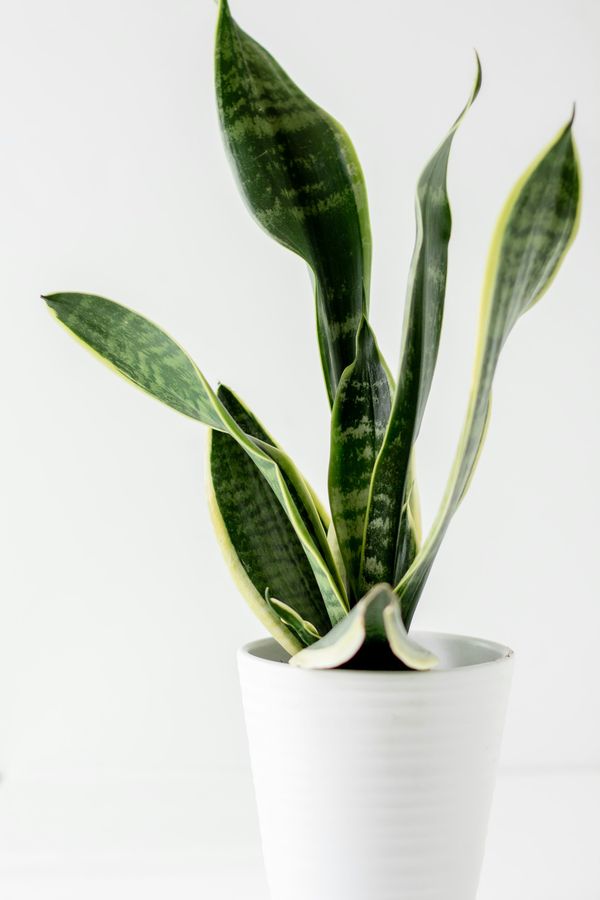Snake Plant Care Guide
How to grow and care for Snake Plant (Dracaena trifasciata)
Welcome to the comprehensive care guide for the Dracaena trifasciata (formerly Sansevieria trifasciata), commonly known as the Snake Plant. Known for its striking, sword-like leaves and its ability to purify the air, the Snake Plant is a perfect choice for both novice and experienced indoor plant enthusiasts. It's easy to care for and adds a touch of elegance to any room. Read on to discover how to provide the best care for your Snake Plant.

Disclosure: This content includes affiliate links, which means we may earn a commission if you click on a link and make a purchase. As an Amazon Associate, we earn from qualifying purchases. This comes at no extra cost to you and helps offset the cost of running Leafwise. Please read our disclaimer for more info.
Table of Contents
Care
Light Requirements
Snake Plants prefer bright, indirect light but are adaptable to lower-light conditions. Prolonged exposure to low light may lead to slower, leggy growth. Avoid direct sunlight, as this can cause leaf scorching.
Watering
Snake Plants are drought-tolerant and sensitive to overwatering. Allow the top 1-2 inches of soil to dry completely between waterings. When watering, thoroughly moisten the soil and allow excess water to drain completely.
Humidity and Temperature
Snake Plants are comfortable in average indoor humidity and do not require additional adjustments. Maintain temperatures between 60-75°F (15-24°C). Avoid exposing the plant to temperatures below 50°F (10°C), as colder conditions can damage the leaves.
Soil
Use a well-draining potting mix formulated for succulents or cacti. Proper drainage is crucial for preventing root rot and moisture-related issues.
Fertilization
Fertilize your Snake Plant every 2-4 weeks during the active growing season (spring and summer) with a balanced, water-soluble fertilizer diluted to half strength. Monitor for signs of over-fertilization, such as browning leaf tips, which indicate you should reduce fertilization frequency or concentration. Discontinue or significantly reduce fertilizing in winter.
Maintenance
Pruning
Regularly prune dead or damaged leaves at the base to promote new growth and maintain a tidy, healthy appearance.
Cleaning
Clean leaves monthly by gently wiping them with a damp cloth. This removes dust, improves photosynthesis, and enhances the plant’s appearance.
Repotting
Repot every 2-3 years, preferably in early spring at the onset of the growing season. Choose a pot with adequate drainage holes to prevent excess moisture buildup.
Propagation
Snake Plants are easily propagated using the following methods:
Leaf Cuttings
Cut healthy leaves into 3-4 inch sections, allowing them to callous for 1-2 days. Mark the bottom end (closest to the soil) clearly, as this end should be planted into moist, well-draining potting mix or placed into water. Once roots form, transplant into soil if initially propagated in water.
Division
During repotting, divide the plant by gently separating the root ball into smaller segments, each with roots and foliage. Pot these divisions separately.
Common Issues
Pests
Spider mites and mealybugs can infest Snake Plants, typically indicated by fine webs, white cottony residue, or sticky leaves. Infestations are more common in low humidity or poorly maintained environments.
- Solution: Inspect regularly, maintain optimal humidity, and treat promptly using a damp cloth or mild insecticidal soap.
Root Rot
Cause: Overwatering combined with poor drainage.
- Identification: Signs of root rot include wilting or yellowing leaves, mushy or blackened roots, and a foul odor emanating from the soil.
- Solution: Remove affected areas, repot in fresh, well-draining soil, ensure adequate pot drainage, and allow the soil to thoroughly dry between waterings.
Yellowing Leaves
Cause: Usually related to overwatering, inadequate drainage, or sudden temperature changes.
- Solution: Adjust watering schedules, enhance drainage, and stabilize environmental conditions.
Brown Tips
Cause: Typically caused by low humidity, underwatering, fluoride in tap water, or fertilizer salt accumulation.
- Solution: Adjust watering practices, increase humidity, use distilled or rainwater, and periodically flush the soil to remove excess salts.
